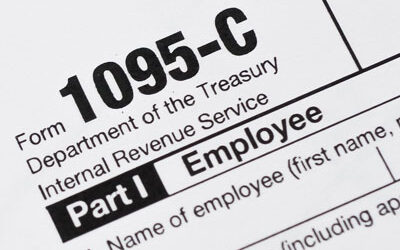There have been important changes to the Child Tax Credit (CTC) that will help many families receive advance payments starting this summer. The American Rescue Plan Act (ARPA) of 2021 expands the CTC for tax year 2021 only.
Expanded CTC Details
- The CTC amounts will increase from tax year 2020 amounts of $2,000 per qualifying child under the age of 17 at the end of the year.
- Taxpayers will now receive $3,000 per qualifying child between the ages of 6 and 17 at the end of 2021. The credit will include children who turn age 17 in 2021.
- Taxpayers will now receive $3,600 per qualifying child under the age of 6 at the end of 2021.
- The increased amounts are reduced (phased out) for incomes over $150,000 for married taxpayers filing a joint return and qualifying widows or widowers; $112,500 for heads of household; and $75,000 for all other taxpayers.
- The credit for qualifying children is fully refundable, which means that taxpayers can benefit from the credit even if they do not have earned income or do not owe any income taxes.
Advance Payment Details – What This Means Now
Taxpayers may receive part of their credit in 2021 before filing their 2021 tax return. Instead of taxpayers waiting to receive the credit when they file their 2021 tax return, they can receive an advance of half of the amount for which they qualify. If taxpayers receive the advance payments now, these will reduce the CTC when the tax return is filed. In other words, if taxpayers receive the funds in advance, they will not receive those funds when the tax return is filed.
On July 15, 2021, taxpayers qualifying for the 2021 advance CTC will begin receiving monthly advances of up to $250 for children age 6 and above and up to $300 for each child under age 6.
- The IRS will determine if taxpayers qualify for this credit and the monthly advance amount is based off of the 2020 tax return.
- Advance payments of the 2021 CTC will be made regularly from July through December to eligible taxpayers.
- The payments will be made on the 15th of each month, taking into account weekends and holidays.
- If the IRS has direct deposit information on file, the advance should be directly deposited into the taxpayer’s bank account.
Eligible taxpayers who do not want to receive advance payment of the 2021 CTC will have the opportunity to decline receiving advance payments. These taxpayers will receive the full CTC for which they are eligible when they file the 2021 tax return. The IRS is currently working on a portal for this purpose.
Taxpayers will also have the opportunity to update information about changes in their income, filing status, or the number of qualifying children. The IRS is currently working on a portal for this purpose as well.
Advance Payment Details – What This Means Later
The advance payments operate similarly to the economic stimulus checks taxpayers received in 2020 and 2021. The payments are not taxable, but taxpayers must keep track of how much they receive because the 2021 tax return will include a reconciliation of the advance CTC payments. If there is a variance in the amount taxpayers received and the amount for which they were qualified, the difference will be recorded on the tax return and refunded to taxpayers as a CTC rebate.
[blockquote author=”” link=”” target=”_blank”]Please understand that accepting the advance CTC payments will affect your 2021 tax return.[/blockquote]
If you typically qualify for the CTC and receive a refund that includes those CTC amounts, your 2021 refund will be reduced by the advance CTC payments. In fact, taxpayers who may have received refunds in the past may instead owe tax this year. Because each situation is driven by its own fact pattern, please contact us if you have questions or concerns about the changes to the CTC.




